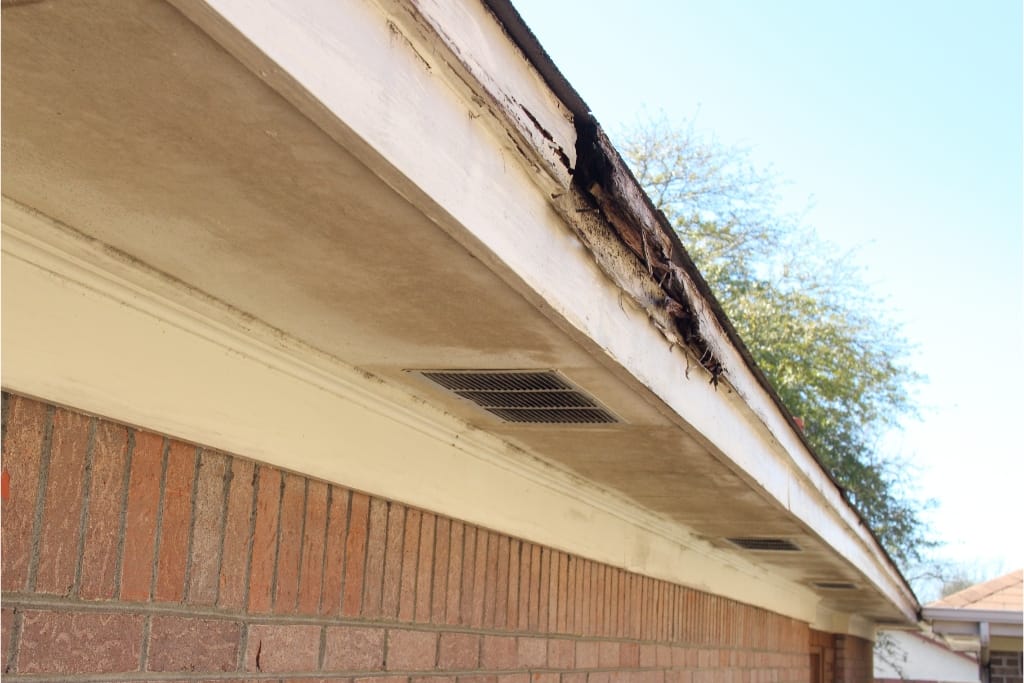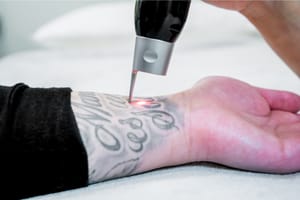When considering professionals to combat dry rot in your home, ensuring that you receive high-quality work is paramount.
Dry rot can cause significant structural damage, threatening the safety and integrity of your property.
It's crucial to partner with a contractor who not only understands the complexities of dry rot treatment but also delivers results that stand the test of time.
By following proven strategies and guidelines, you can effectively assess the skills and reliability of potential contractors.
Discover these essential tips to safeguard your investment and achieve peace of mind in the work performed.
Dive deeper into the key methods that will empower you to secure top-notch service from your dry rot contractor.
1)) Research And Verify Credentials
The first step to ensuring quality work from your dry rot contractor is thorough research and verification of their credentials.
Start by checking the contractor’s licensing and certifications, which are indicators of their professional legitimacy and compliance with industry standards.
Request references from past projects and contact these references to gather firsthand information about the quality and reliability of the contractor's work.
Online reviews and ratings can provide a broader perspective of the contractor's reputation in the community.
Be sure to verify insurance coverage to avoid liability in case of accidents or damages during the project.
By meticulously researching and confirming your contractor's credentials, you lay a solid foundation for a successful partnership in addressing dry rot issues.
2)) Request And Compare Multiple Quotes
Gaining multiple quotes from different contractors is essential to ensure you receive quality and cost-effective work for your dry rot project.
By requesting quotes from several contractors, you gain insight into the average market price, allowing you to identify any outliers that may signal either an underqualified contractor cutting costs or an overcharging one.
When comparing quotes, pay close attention to the scope of work each contractor is proposing, including materials, estimated timelines, and warranties offered.
A detailed and transparent quote often reflects the contractor’s commitment to quality and accountability.
Engaging in this comparative analysis not only aids in making an informed decision but also empowers you to negotiate better terms, ultimately leading to a satisfactory resolution of your dry rot concerns.
3)) Check References And Previous Work
One of the most reliable ways to gauge the quality of a dry rot contractor's work is by checking their references and examining their previous projects.
Reach out to past clients to learn about their experiences, focusing on the contractor’s timeliness, professionalism, and adherence to the agreed-upon scope of work.
If possible, visit some of these completed projects to assess the quality of workmanship firsthand.
Pay attention to the durability and aesthetics of the repairs, as these factors can indicate the contractor's level of expertise and attention to detail.
Viewing a portfolio of past work and speaking with previous clients will provide a comprehensive understanding of what you can expect.
By ensuring the contractor has a proven history of satisfied customers and successful projects, you establish trust and confidence in their ability to effectively manage your dry rot issues.
4)) Clearly Define The Scope Of Work
A clear and detailed definition of the scope of work is imperative when hiring a dry rot contractor.
This step prevents misunderstandings and ensures that both you and the contractor have aligned expectations regarding the project.
Start by outlining the specific areas affected by dry rot and the extent of the treatment required.
Discuss with the contractor their proposed approach, including the materials to be used and the timeline for project completion.
It is essential to put this information in a written agreement to hold all parties accountable and provide a reference point if disputes arise.
A well-defined scope of work not only aids in maintaining budget and schedule but also serves as a guide to achieving the desired quality of repairs.
By establishing a comprehensive and mutual understanding of the project’s parameters, you set a solid precedent for successful dry rot remediation.
5)) Agree On A Detailed Contract
Signing a detailed contract with your dry rot contractor is a crucial step in formalizing the terms of your project and protecting your interests.
This document should outline every aspect of the agreement, including a comprehensive description of the work to be completed, timelines, cost estimates, payment schedules, and any warranties or guarantees offered by the contractor.
Ensure that the contract specifies the quality of materials to be used and any permits or permissions required for the work.
In addition, include a clause addressing how changes to the scope of work will be managed, ensuring that any alterations are documented and mutually agreed upon.
A well-prepared contract not only serves as a legal safeguard but also sets a clear expectation for both parties, mitigating the risk of misunderstandings or disputes during the project.
By agreeing on a detailed contract, you establish a strong framework for a successful collaboration with your dry rot contractor.
6)) Monitor Project Progress Regularly
Maintaining regular oversight of your dry rot project is essential to ensure it stays on track and meets the established standards.
By consistently monitoring the progress, you can quickly address any issues that arise, such as delays, deviations from the agreed-upon scope of work, or unexpected complications.
Frequent communication with the contractor helps preempt misunderstandings and fosters collaboration, ensuring adjustments can be made promptly to keep the project within budget and on schedule.
Documenting each phase of the work, including photographs and updates, provides a comprehensive record of the project's evolution, which can be invaluable for future reference or in the event of disputes.
Through proactive supervision and open dialogue, you mitigate risks and maintain a trajectory toward successful completion of the dry rot remediation.
By making project monitoring a priority, you contribute significantly to the quality and timeliness of the work.
7)) Communicate Effectively
Effective communication is the cornerstone of a successful partnership with your dry rot contractor.
Establishing clear and open lines of communication from the outset helps prevent misunderstandings and ensures that any issues can be addressed promptly.
Begin by setting regular update meetings or check-ins, whether in person, over the phone, or via email, to discuss the project's progress and any potential changes needed.
Encourage the contractor to voice any concerns or suggestions they may have, fostering a collaborative environment where both parties feel heard and respected.
Document all agreed decisions and changes in writing to maintain a record that can be referred to if necessary.
By prioritizing strong communication, you create a transparent and cooperative work dynamic, leading to smoother project execution and satisfaction for all involved.
8)) Ensure Proper Permits And Compliance
Securing the necessary permits and ensuring compliance with local regulations is a critical component of managing a dry rot project.
This step not only validates the legality of the work but also guarantees that the project's standards align with the safety codes and guidelines established by the authorities.
Begin by researching the specific permits required for your location and ensure they are obtained before commencing any work.
Collaborate closely with your contractor to verify that all elements of the project conform to the relevant building codes and regulations.
Keeping meticulous records of permits and communication with inspectors can be advantageous in demonstrating due diligence and can protect against potential legal complications.
Staying vigilant about compliance throughout the project reduces the risk of costly fines or mandated corrective work.
By prioritizing proper permits and compliance, you lay a foundation for a smooth project execution and enhance the integrity of the dry rot remediation process.
9)) Confirm Completion And Satisfaction
Ensuring that your dry rot project is completed satisfactorily requires a thorough inspection and confirmation of all work done.
Begin by reviewing the project scope outlined in the contract and cross-checking it against the final output to verify that every detail and requirement has been addressed.
Conduct a detailed walkthrough with your contractor, examining the quality of materials used and the craftsmanship involved in the remediation process.
Highlight any discrepancies or unfinished tasks promptly, and agree on a timeline for their resolution.
Gathering feedback from any other stakeholders or building residents can also provide insights into any overlooked issues.
Furthermore, obtain any necessary documentation, such as warranties or maintenance guidelines, to safeguard your investment moving forward.
By confirming completion and ensuring satisfaction at each step, you validate the success of the project and can confidently conclude that the dry rot remediation meets all set expectations and standards.
10)) Review Warranty And Maintenance Options
Understanding and reviewing warranty and maintenance options are crucial steps in safeguarding the longevity and performance of your dry rot remediation project.
A comprehensive warranty can provide peace of mind by covering repairs or replacements for a specified period after the project's completion.
Before signing, ensure that you fully grasp the terms and conditions, including what is covered, any exclusions, and the process for claiming warranty services.
Discussing maintenance options with your contractor can help establish a routine that minimizes future problems and extends the life of the repairs.
Regular inspections and upkeep, as recommended by the contractor, can prevent further decay and maintain the integrity of the affected structures.
By thoroughly reviewing warranty and maintenance options, you protect your investment against unforeseen issues and ensure the continued success and durability of the dry rot remediation efforts.
Conclusion
Successfully navigating a dry rot project involves a multifaceted approach, encompassing effective communication, securing necessary permits, and ensuring compliance with local regulations.
Throughout the process, maintaining meticulous attention to detail is essential, from confirming completion and satisfaction of the work to thoroughly reviewing warranty and maintenance options.
By diligently addressing each of these components, you create a resilient plan that safeguards the integrity of the project, supporting a sturdy and durable end result.
This comprehensive strategy not only enhances the quality and longevity of the remediation effort but also provides peace of mind, knowing all aspects have been thoroughly considered and managed.
The careful orchestration of these steps leads to a successful project that meets all expectations and stands the test of time.
Download Our Free E-book!








